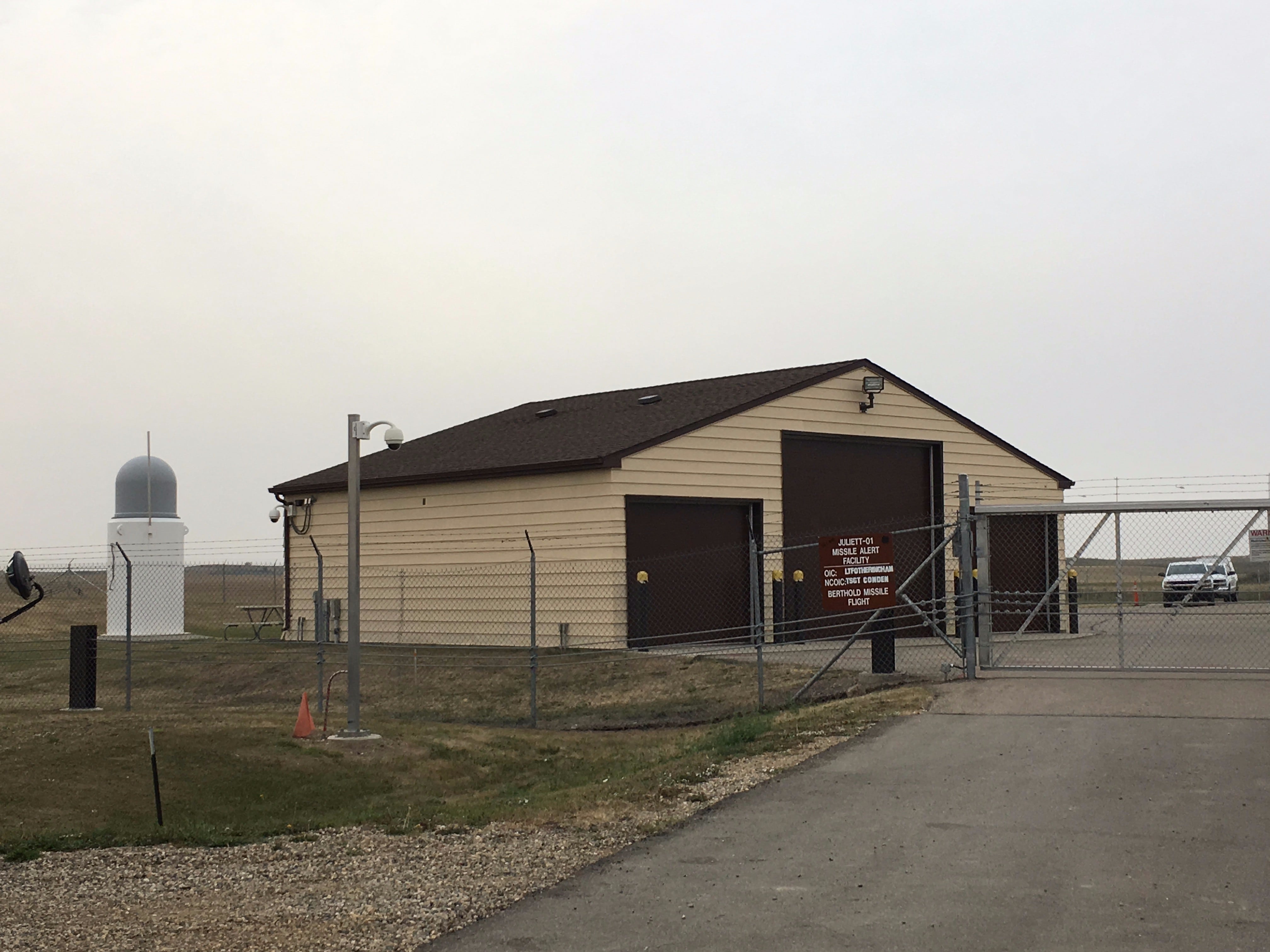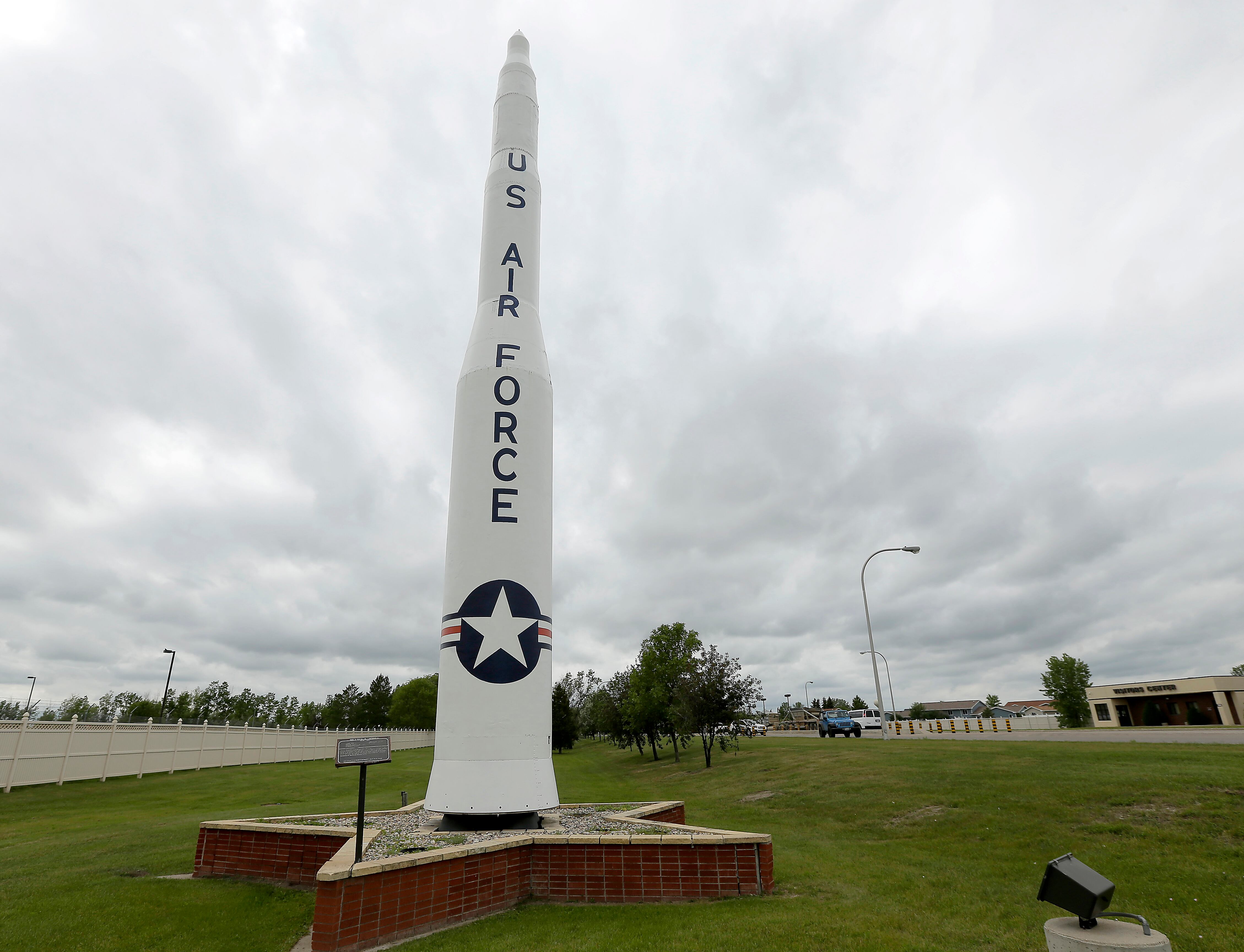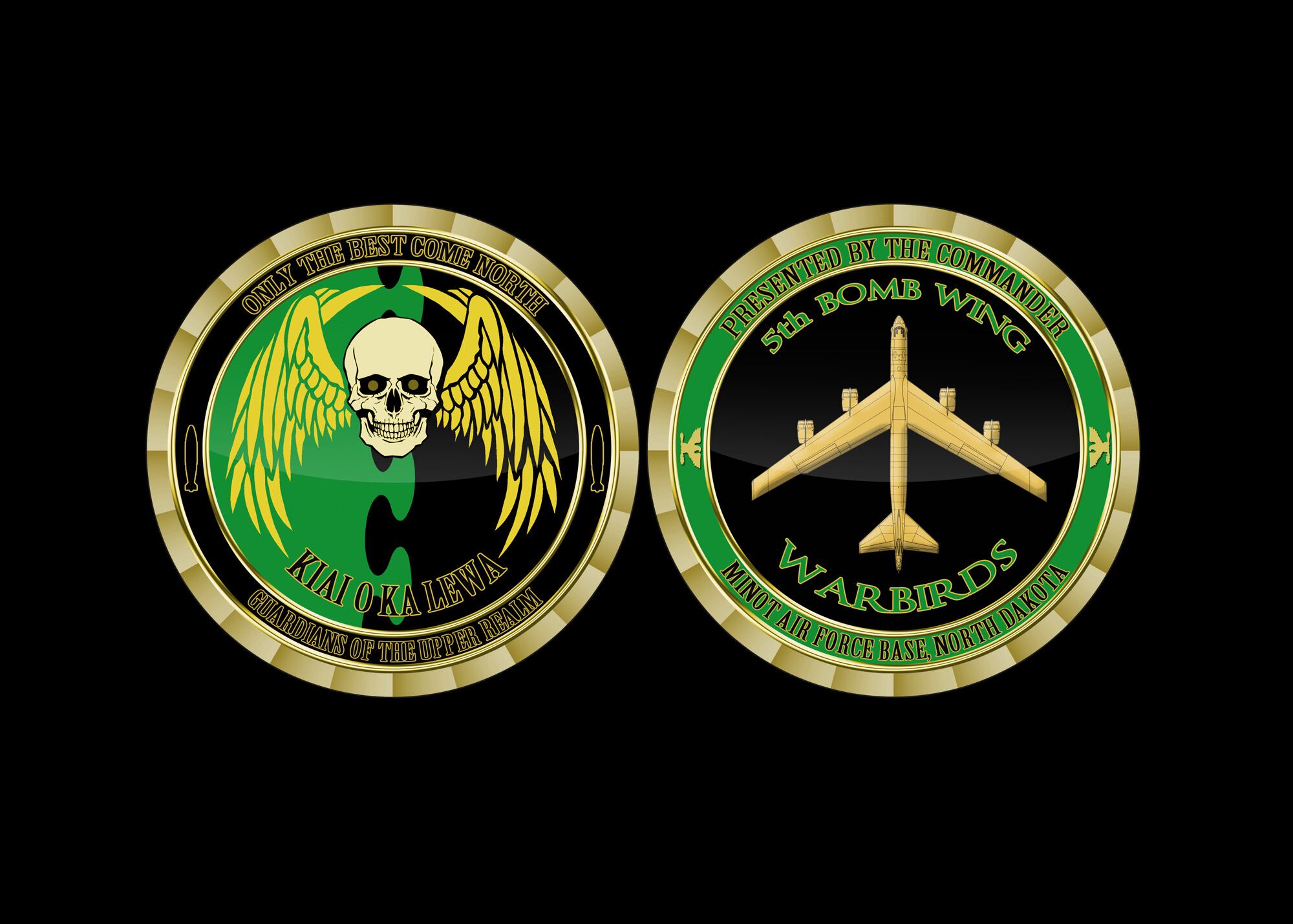MINOT, N.D. — The missile wing and the bomb wing at Minot Air Force Base are celebrating their 50th year since arriving here.
According to Minot AFB information, the 91st Missile Wing arrived on June 25, 1968. The 5th Bomb Wing arrived at the base a month later on July 25, 1968.
The names of both wings have changed since their arrival. Initially, the missile wing was the 455th Strategic Missile Wing and the bomb wing was the 450th Bombardment Wing.
The wings’ anniversaries were acknowledged with anniversary cake served at the picnic meal during Military Day at the Zoo held in Minot’s Roosevelt Park.
RELATED

According to Minot Daily News files and Minot AFB history about the 91st Missile Wing, the Air Force awarded the contract to Boeing for the Minuteman missiles in 1958. In July 1963, a ceremony with military and civilian officials was held at a launch control center four miles north of Renville Corner to mark the end of $82 million worth of construction on the 150 missile silos and 15 launch control centers in the Minot missile field. The construction phase ended 50 days ahead of schedule.

Work had started on the Minot missile complex in January 1962 following an award of a multi-million dollar contract to Peter Kiewit Sons Co. of Omaha. During those 18 months, men and machines poured 165,150 cubic yards of concrete — “enough to lay a concrete highway 21 feet wide and 6 inches thick from Minot to Bismarck,” the Minot Daily News reported.
“Workers accumulated 9,000,000 man hours and vehicles traveled 50,000,000 miles while machines gouged holes in the earth for the missile silos that would measure more than two miles in depth,” the newspaper said.
Construction on the complex started in the Velva area with work spreading through eight counties forming a semi-circle around Minot AFB.
Work done during the construction stage was valued at $82 million with the total cost of the complex, when all the electronic equipment in place, estimated at $135 million, excluding the missiles themselves.
The first of the 150 Minuteman I missiles arrived from Hill AFB, Utah, on Sept. 9, 1963, and was placed in launch facility A-02 on Sept. 9, 1963. The following April the missile wing became combat ready.
“When all 150 are in place, they will become ‘silent sentinels’ beneath the earth, never to see life unless the nation goes into a nuclear war,” the newspaper said.
Later, the Minuteman I missiles were replaced with the Minuteman III missiles, with the Minot missile wing to become the first wing in the Air Force to convert to the newest model of ICBMs. The 741st Strategic Missile Squadron became the first operational Minuteman III squadron in December 1970, and the entire wing was converted by December 1971.

One of the oldest military aviation units in the world, the 5th Bomb Wing has been at Minot Air Force Base since July 25, 1968.
Some of the first B-52H models made were assigned to the Minot wing, many of which were to see service in the skies over Vietnam.
The first B-52 arrived at Minot AFB on July 16, 1961, with an appropriate celebration held for the “Peace Persuader.” Maj. Clyde Evely flew the first B-52 to the Minot base. A few months later, he and his crew set a record in a Minot AFB B-52, flying 12,532 miles from Kadena Air Base in Okinawa, Japan, to Madrid, Spain.
RELATED

One of the most memorable days in the history of the then 450th Bomb Wing occurred when the late President John F. Kennedy personally commended the crew of the wing after the men smashed more than a dozen international air records in their non-stop flight from Okinawa to Spain.
Within five months after the first B-52H arrived, the Minot base received its first Hound Dog missile to give the B-52 its first stand-off capability. The base was one of the first bases to get the B-52H model and, according to Col. Harold Radetsky, an early day bomb wing commander at the Minot base, the B-52 was the “most devastating offensive weapon in our country’s arsenal” in 1961.
Both the missile wing’s Minuteman IIIs and the bomb wing’s B-52s have continued to be modernized.
The missile wing has gone through a number of name changes over the years as well as command changes. On Dec. 1, 2009, the 91st Missile Wing officially transferred from Air Force Space Command to the Air Force’s newest major command focusing on the nation’s nuclear enterprise, Air Force Global Strike Command.
The bomb wing also has had changes during its existence. On Feb. 1, 2010, the bomb wing transferred from Air Combat Command to Air Force Global Strike Command.
Today, Minot AFB is the only base with dual nuclear-capable wings. Col. Bradley Cochran is the commander of the 5th Bomb Wing and Col. Colin Connor is commander of the 91st Missile Wing.




